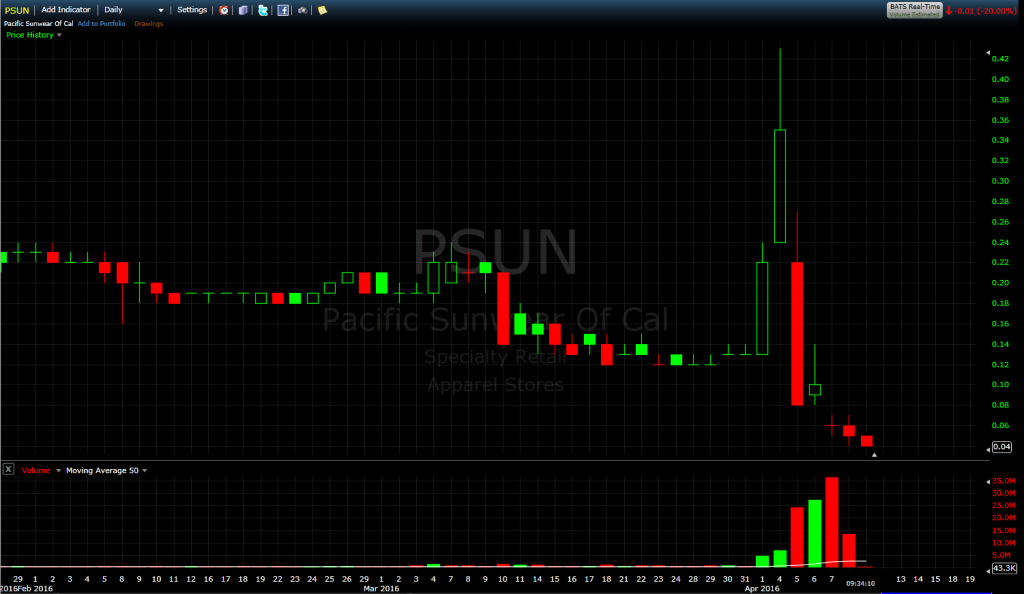New Bulls on Wall Street subscribers are sometimes surprised to learn that I don’t trade penny stocks. I understand the confusion, as many equate day trading with penny stocks, but that’s a misconception. I used to trade penny stocks, but as I gained experience over the years, I moved away from them. Here’s why.
You can get stuck in a trade
A defining feature of most penny stocks is minimal liquidity. This means that few shares are traded in the course of an average day. As a trader, this can make executions difficult. When you are trying to get into a stock that’s currently trading at $.75, and the lowest that anyone is selling shares (the Ask) is $.79, you are forced to either sit on your hands or pay a premium to get in the stock. What’s even worse, though, is when you have the shares and you want to sell but can’t. Sometimes, there are simply no buyers – at least not at a price that you want to sell.
They drop out of nowhere
The vast majority of penny stocks also have a low float, meaning there are few shares available for trade. For mid and high float stocks, it takes a lot of capital to move the price. The majority of the stocks we trade would require an institution – or an incredibly wealthy individual – to move them considerably. Low float stocks can spike and drop out of nowhere, and sometimes it takes frighteningly little capital to do so. Here’s a recent example.
If you’d held overnight from the 4th, you could have lost as 50% of your capital – or more! But 3/10 was almost as bad. On that day, you could have lost 30% of your capital, and the total volume for the day was only 1 million shares traded – on a 21 cent stock! Which brings us to our next point…
Manipulation
It’s much easier to manipulate a low float, low price stock than its more expensive, higher float cousin for the simple reason that it takes far less capital. The classic form of manipulation is the pump and dump. A firm or individual will pump a penny stock up with newsletters, emails, social media, and other promotion. The manipulator will recommend buying the stock, for reasons that can range from honest to completely fabricated. Once the stock has spiked, the manipulator will sell his or her shares, reaping a huge reward. All of that selling will inevitably dump the stock, and those who bought into the hype will be scrambling for an exit.
It’s tough to alert
There are ways to run a subscription service and alert penny stocks, but it’s challenging. Trying to execute your own trades and alert in a timely matter without either getting bad fills or ensuring your subs take a hit is a lot to manage. And as discussed above, penny stocks can move so quickly that even if you do everything perfectly, a lot of subscribers won’t be able to get in at a reasonable price.
Penny Stocks Summary
I don’t want to dissuade you from ever trading penny stocks, or criticize those who trade and alert them; there are some great penny stock traders out there. But, the learning curve is steep, and with a little bad luck or a couple poor decisions you can wipe out your account. There are plenty of hot, profitable stocks that are also liquid and very difficult to manipulate. Why mess around with penny stocks when there are more reliable options?



